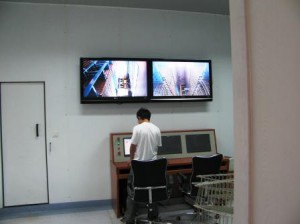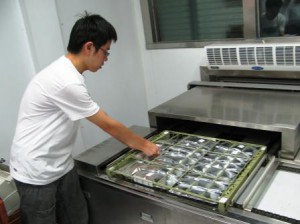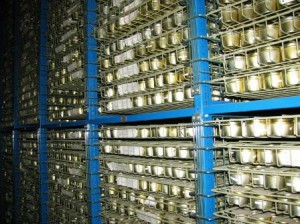
And this is the corridor leading to the long-term cold store.

There’s a control room from which you can order a particular tray of accessions.

And here it is coming out.

But you can also go into one of the cold stores and pick out individual accessions by hand if you prefer. 
The long-term genebank holds about 356,000 accessions of 735 species, including 72,000 of rice and 45,000 of wheat. The total capacity is about 400,000, so a new facility is being built, with a capacity of 1.5 million accessions. This long-term store is the apex of a national system comprising dozens of mid-term national and local seed genebanks spread throughout the country. Plus of course there are also field and in vitro collections. The whole collection in the national genebank is duplicated at another site in China. Not at Svalbard, though. Yet.
How accessible is data and information on these holdings? Is it all in Chinese language?
The online database is indeed exclusively in Chinese at the moment, I believe.